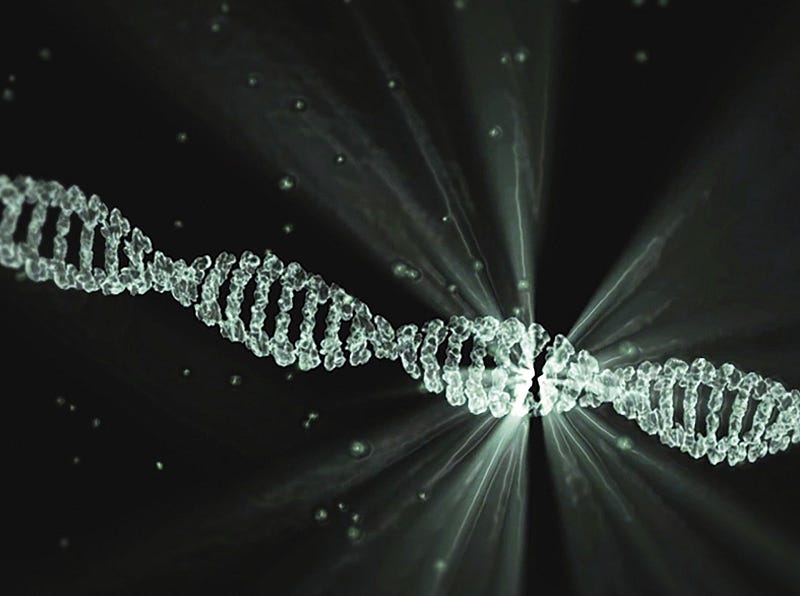# Understanding the 9 Hallmarks of Aging and Their Solutions
Written on
Chapter 1: The Stages of Aging
Aging is a journey that most people experience in distinct phases. As children, we often perceive our elders as peculiar figures, sharing wisdom and treats, yet their behaviors seem foreign to us.
As we transition into young adulthood, we reach a peak in health and vitality, witnessing the physical decline of our elders. This observation instills a gradual awareness that aging is inevitable for all of us. However, even as we confront the deaths of older relatives, the concept of aging remains abstract and not particularly daunting.
Once we enter middle age, the effects of aging become tangible. We start to notice persistent aches and pains, an inability to stay up late as we once did, and a decline in our cognitive sharpness. The true fear of aging often emerges when we observe our parents facing serious health issues, prompting a deeper realization of our mortality.
However, there is hope on the horizon. Thanks to significant research efforts over the last few decades, scientists are uncovering the underlying mechanisms of aging. A landmark study by Carlos López-Otín and his team in 2013 identified nine hallmarks of aging, grouped into three categories, revealing how our bodies succumb to the gradual decline of function.
Group 1: Primary Causes of Cell Damage
- Genomic Instability: Over time, our DNA accumulates damage from various sources, including UV radiation, environmental pollutants, and harmful chemicals. This degradation can ultimately lead to cancer.
- Telomere Attrition: Telomeres serve as protective caps on our chromosomes but shorten as we age. This shortening hampers DNA replication and diminishes cellular regeneration.
- Epigenetic Alterations: Aging disrupts the epigenetic code that differentiates our tissues, resulting in weakened systems such as reduced immune response and nerve function.
- Proteostasis Loss: The process responsible for protein creation and breakdown becomes less effective with age, potentially contributing to neurodegenerative diseases like Alzheimer’s.
Group 2: Antagonistic Responses to Cell Damage
- Deregulated Nutrient Sensing: As we age, our cells' ability to sense and respond to nutrient availability becomes impaired, affecting growth and repair processes.
- Mitochondrial Dysfunction: Aging mitochondria produce excessive free radicals, which can lead to cell and DNA damage, causing various health issues.
- Cellular Senescence: Damaged cells may enter a state of senescence, ceasing to divide but still contributing to inflammation and other health problems.
Group 3: Integrative Effects of Damage
- Stem Cell Exhaustion: The frequent use of stem cells for repair leads to their deterioration, decreasing their effectiveness over time.
- Altered Intercellular Communication: Damage to cells disrupts essential signaling processes, weakening immune responses and increasing vulnerability to diseases.

Chapter 2: Potential Solutions to Aging
Now that we understand the causes of aging, what steps can we take to address it?
Current research into drug therapies shows promise. One notable trial, TAME (Targeting Aging with Metformin), is tracking thousands of individuals over 65 to assess various age-related health conditions. Preliminary studies suggest that Metformin may extend lifespan in mice, equating to a potential four-year increase in human longevity.
Caloric restriction is another area of interest, leading to research on CR mimetics—substances that aim to replicate the benefits of a calorie-restricted diet without the need for severe dietary limitations.
Additionally, researchers have recently identified several age-related transcription factors that could influence human longevity. As discoveries continue to emerge, innovative thinkers in biotechnology may unlock transformative approaches to aging.
An intriguing yet often overlooked aspect of longevity research is its potential impact on humanity's expansion into space. As astronauts and workers in extraterrestrial environments face unique challenges—such as microgravity and cosmic radiation—enhancements in human longevity will be crucial. These advancements could drive new economies and ensure humanity's survival against existential threats.
To bridge the fields of human longevity and space technology, significant investment is necessary. SP8CEVC, a newly established venture capital fund, is dedicated to exploring the intersection of these two domains. Its founders, Capt. Franz Almeida and Junaid Mian RPh, are preparing to unveil their vision soon.
With ongoing efforts to combat the realities of aging, we may soon unlock a future where the fear of growing old becomes a relic of the past, enabling humanity to thrive both on Earth and beyond.
This video titled "What are the hallmarks of aging?" delves into the core concepts of aging and the scientific understanding of its mechanisms.
In "The Hallmarks of Aging | LifeXtenShow," this video explores the implications of aging and discusses potential strategies to combat its effects.